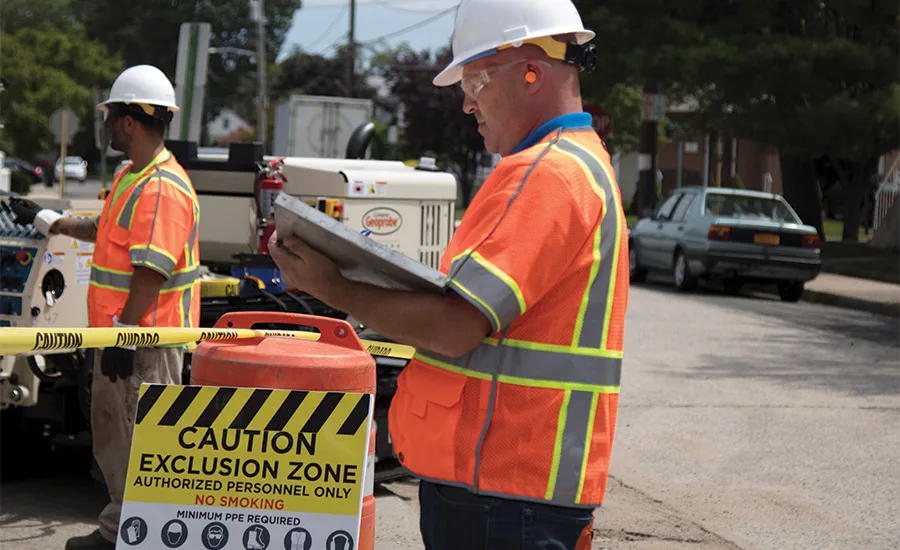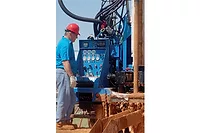Drilling Safety Resolutions for the New Year

Setting company-wide resolutions with the goal of increasing safety is a start. Employees also require straightforward training and reinforcement for buy-in.
Source: Cascade Environmental
For many of us, the new year starts by writing a set of resolutions, things we would like to improve or bad habits we want to kick. This tradition can help anyone wishing to make positive changes in the new year — whether as an individual or an organization. If you are interested in creating a safer work environment for your team in 2020, it might be time to develop your company’s safety resolutions for the new year.
Use Data to Select Your Goals
No matter what goals you select, one thing is constant: You must understand what your goals are. The environmental drilling and services industry has a certain amount of inherent risk, which is why it’s vital to create and maintain a strong safety culture. In order to know if you’re successful in mitigating risk, you need to establish baseline metrics and track them to determine if you’re making progress or losing ground. Fortunately, there are many metrics to decipher safety performance and help determine which resolutions to put into place.
Consider some common metrics Cascade uses for tracking progress, including total recordable rates (TRRs), critical incident reports (CIRs), experience modification rates (EMRs) and motor vehicle incidents (MVIs). Based on your existing data, you’ll want to select and prioritize a few key areas for improvement and determine reasonable and attainable goals for the year. Remember: What gets measured gets marked for improvement.
Set the Bar
It’s critical to set reasonable and attainable goals. Setting the bar too high may discourage people from even attempting to reach it or spur them to quit when they don’t see immediate results. However, if we don’t challenge ourselves at all, we only meet goals we have purposefully shrunk down to minimize effort. For example, if one employee instead of two got hurt on a jobsite, would we consider the safety program successful? No, of course not. All injuries are preventable, so avoid the trap of setting the bar too low.
Another aspect of setting the bar includes making sure your team understands what the bar is. You can set safety resolutions and goals, but without clear communication and understanding of what those goals are and why they were created, it’s unlikely they will be met.
For example:
- Lower the overall TRR. This goal requires an ongoing commitment, in part due to variables that require management, such as individual attitudes toward safety and individual risk tolerance. Getting employees to understand that their performance affects not only them, but their families, friends, co-workers and the company as a whole, will make a difference. In short, employees must buy into the safety program.
- Decrease incidents. This is a good goal in theory, but it will not always tell the entire story. For instance, companies can address incident trends proactively using data from near miss reporting. If those incidents go unreported, important knowledge that could prevent or minimize future incidents gets lost. I suggest using “increase near-miss reporting” as a goal rather than merely decreasing incidents.
Resolve Individually
Setting company-wide resolutions to implement better safety performance is always a good idea, but a successful safety performance requires all employees to work toward a common goal of “no one gets hurt.” Therefore, I suggest tasking employees with individual resolutions and challenging them to meet those goals. Here are a few examples of effective resolutions:
- Work safely and coach your peers. If you see something, say something. From the outside, this looks like an easy goal. However, personal differences, working behaviors and learned experiences make it harder than it looks. Getting involved is one of the most important components of an effective safety culture, a sign of a proactive safety program and evidence that employees have bought into the overall policy and message.
- Focus on hazard recognition. Ask employees to ask themselves, “What could go wrong?” and, “Is this the safest way to do this?” These two questions are the very basics of hazard recognition and, I believe, have the potential to prevent all incidents.
- Follow policy and procedure always. If something is risky or outside of policy, the solution is simple: Don’t do it! This resolution makes it easier for employees to make those tough calls. Keep in mind that this is only effective if employees know the policies and procedures, have effective hazard recognition skills, and feel supported by management.
- Be a leader. This may be the most important resolution because, regardless of your title, your role in safety is important. In most incidents, someone knew about a hazard well in advance, but didn’t speak up because they didn’t feel able to or thought it wasn’t their responsibility. Set the bar individually and companywide through positive interaction and mentorship.
- Lastly, participate and communicate. Employees must always feel empowered enough to approach their manager about any safety-related deficiency and managers must always be willing to work toward providing a safe workplace. At Cascade, we have an open-door policy and every employee’s input is valued. This is a critical component to our overall safety culture.
Anyone can set a goal for the new year, but setting reasonable safety resolutions can create a safer work environment if you use data to select the right goals for your organization, set a bar that is attainable (but still a stretch!), and make sure everyone on your team is invested in making safety a priority for 2020.
Looking for a reprint of this article?
From high-res PDFs to custom plaques, order your copy today!





